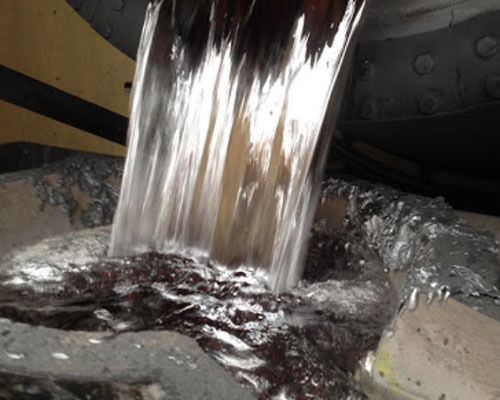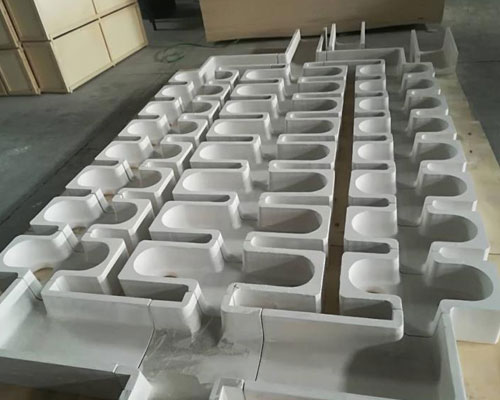When casting with a new type of hot-top casting process equipment, the high-temperature melt in the shunt plate directly rushes to the center of the ingot liquid cavity, thereby forming a deep and sharp liquid cavity. There is a large tensile stress at the bottom of the liquid cavity, which can easily lead to the center. The occurrence of cracks. In order to suppress this kind of center crack, measures should be taken to avoid the liquid flow directly rushing to the center of the ingot liquid cavity, and at the same time to make it flow evenly around the ingot. At this time, no sharp-bottomed liquid pocket will be formed, and the temperature of the melt flowing to the periphery of the ingot will be increased, which will help prevent the occurrence of central cracks.
The temperature of the melt flowing to the periphery of the ingot is low, and there is a height of cold separation when casting a diameter ingot. When the melt from the draft tube to the mold is flowing to the periphery of the ingot, the following situations occur:
- Obstructed by the lower surface of the draft tube or the transition plate, the melt flowing to the periphery of the ingot displaces slowly.
- Affected by the resonance of the draft tube and the transition plate, the temperature of the melt flowing to the periphery of the ingot is low.
- Affected by the law of minimum index of refraction, the high-temperature melt superimposed from the shunt plate mainly rushes to the center of the liquid cavity, and rarely flows to the edge of the ingot.
Therefore, when the new hot top casting process equipment is used for casting, there is a tendency for cold barrier defects to form around the ingot.
When casting an ingot with a diameter crack, it is usually necessary to reduce the casting speed in order to prevent the center of the ingot from cracking. As the speed decreases and the flow rate decreases, it is easier to promote the generation of cold barrier defects.

After degassing, slagging and refining, the secondary pollution of the melt is difficult to complete when it flows through the casting system for casting. Exhaust in the casting process, poor slag discharge conditions, easy to produce gas and non-metallic slag defects. The new hot-top casting process equipment, its draft tube or adapter plate basically covers the exposed liquid surface during casting, and the gas precipitated during crystallization and the slag carried during the floating process are difficult to be discharged from the melt. Therefore, when using the new hot top casting process equipment for casting, it is necessary to strengthen the degassing of the melt, slag removal and refining, and at the same time to avoid secondary pollution.

